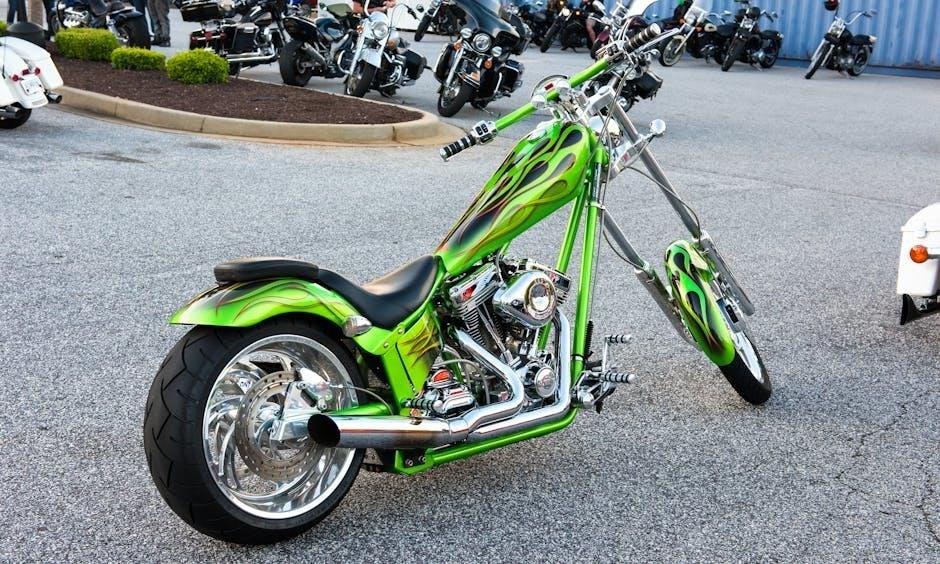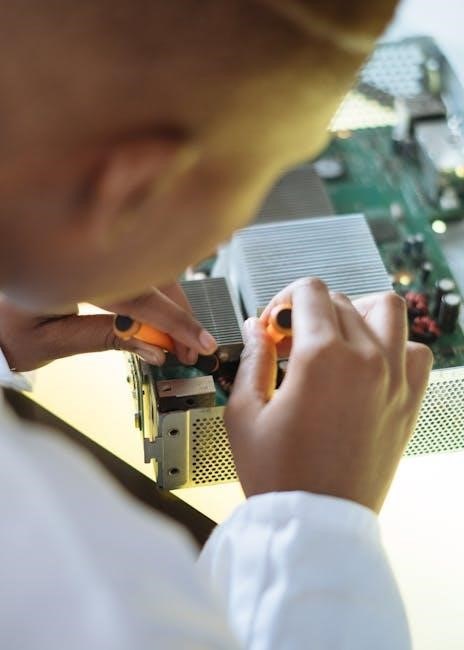shinco portable air conditioner manual
Shinco Portable Air Conditioner Manual⁚ A Comprehensive Guide
This comprehensive guide provides detailed instructions and troubleshooting tips for your Shinco portable air conditioner. Learn about operation, maintenance, and safety precautions to ensure optimal performance and longevity. Consult this manual for answers to frequently asked questions and model-specific information.
Welcome to the world of Shinco portable air conditioning! Before operating your new unit, please carefully review this manual to ensure safe and efficient use. Your safety is paramount. Always ensure the unit is plugged into a properly grounded 115V, 60Hz AC outlet protected by a 15-amp time-delay fuse or circuit breaker. Never attempt repairs yourself; contact a qualified technician for any service needs. Keep children and pets away from the unit’s moving parts and hot exhaust. Avoid obstructing the air intake and exhaust vents, which can lead to overheating and malfunctions. Regularly inspect the power cord for any signs of damage and replace it immediately if necessary. Always unplug the unit before cleaning or performing any maintenance. This will prevent electrical shocks and ensure your safety. Note that continuous operation may require periodic breaks to prevent overheating. Consult the recommended break schedule in this manual for optimal performance and longevity of your Shinco air conditioner. For specific model details, refer to the model-specific sections within this manual. Proper usage and adherence to safety guidelines will ensure many years of comfortable cooling. Remember to always consult a qualified professional for any issues beyond the scope of this manual.
Model-Specific Manuals⁚ SPHN12W, SPF1-08C, SPF2-10C, SPF1-10C, SPF2-08C, SPF1-12C-WIFI, SPF3-12C, YPL3-10C
While this manual covers general operating procedures for Shinco portable air conditioners, certain features and specifications may vary slightly between models. For detailed information specific to your unit (SPHN12W, SPF1-08C, SPF2-10C, SPF1-10C, SPF2-08C, SPF1-12C-WIFI, SPF3-12C, or YPL3-10C), please refer to the individual model’s manual. These manuals provide in-depth instructions tailored to your specific air conditioner, including detailed diagrams, technical specifications, and troubleshooting guides. Access these model-specific manuals through the Shinco website or by contacting Shinco customer support. The model number is usually located on a sticker on the back or side of the unit. Ensure you are referencing the correct manual to avoid confusion or potential damage to your appliance. These supplementary manuals will provide crucial information pertinent only to your specific model, ensuring optimal performance and addressing any unique features or functionalities. The additional information provided will enhance your understanding and proper usage of your Shinco portable air conditioner.
Operating Instructions⁚ Cooling, Dehumidifying, and Fan Modes
Your Shinco portable air conditioner offers three primary operational modes⁚ Cooling, Dehumidifying, and Fan. The Cooling mode utilizes a refrigerant to lower the room temperature, providing a refreshing breeze on hot days. Select the desired temperature using the control panel or remote. The Dehumidifying mode efficiently removes excess moisture from the air, combating stuffiness and dampness. This mode is particularly beneficial in humid climates or during rainy seasons. The Fan mode circulates air without cooling or dehumidifying, useful for gentle air circulation when cooling isn’t necessary. Fan speed can often be adjusted between high and low settings. Transitioning between modes is typically achieved through simple button presses on the control panel or via the remote control. Always ensure the unit is properly installed and the exhaust hose is correctly positioned before operating in any mode. Consult the model-specific manual for precise instructions and operational details relevant to your specific Shinco unit. Remember to periodically clean the air filter to maintain optimal performance across all modes. Improper usage might lead to reduced efficiency or potential damage.
Control Panel and Remote Control Features
Your Shinco portable air conditioner features a user-friendly control panel and a convenient remote control for effortless operation. The control panel, typically located on the top of the unit, provides direct access to essential functions. Buttons for mode selection (Cooling, Dehumidifying, Fan), temperature adjustment, fan speed control, and timer settings are commonly included. A clear LED display shows the current settings and operational status. The remote control duplicates most of the control panel’s functions, allowing for convenient operation from anywhere within range. Some models might include additional features such as sleep mode, which gradually adjusts the temperature throughout the night for enhanced comfort and energy efficiency. Others might offer programmable timers, allowing you to schedule the unit to turn on or off automatically. Always refer to your specific model’s manual for a complete list of features and detailed instructions on their operation. Properly understanding the functions of both the control panel and the remote will significantly enhance your user experience and ensure optimal performance from your Shinco portable air conditioner.
Temperature and Fan Speed Adjustments
Precise temperature and fan speed adjustments are crucial for personalized comfort with your Shinco portable air conditioner. The unit typically offers a range of temperature settings, usually displayed in degrees Celsius or Fahrenheit, depending on your model and regional settings. Adjusting the temperature is usually done via buttons on the control panel or remote. Incrementally increase or decrease the temperature to achieve your desired level of coolness. Remember that setting the temperature too low might not significantly improve cooling and could lead to increased energy consumption. Fan speed adjustments allow you to control the airflow intensity. Most Shinco models provide options for low, medium, and high fan speeds. A lower fan speed provides a gentle breeze, ideal for sleep mode or when you prefer a softer airflow. Higher speeds offer more powerful cooling but might be slightly noisier. Experiment with different fan speed settings to find the optimal balance between cooling efficiency and noise levels. The ideal settings often depend on room size, ambient temperature, and personal preference. Refer to your specific model’s manual for the exact temperature and fan speed ranges available.
Continuous Operation and Recommended Breaks
While Shinco portable air conditioners are designed for extended use, continuous operation without breaks can lead to overheating and reduced lifespan. Generally, portable air conditioners can run continuously for 8 to 12 hours, but this depends on factors like the unit’s capacity, ambient temperature, and the size of the room being cooled. To prevent overheating and ensure optimal performance, it’s recommended to allow your unit regular rest periods. Experts suggest turning off the air conditioner for 15-20 minutes every 3-4 hours of continuous operation. This allows the internal components to cool down, preventing potential damage. During these breaks, ensure proper ventilation around the unit to facilitate cooling. Prolonged continuous operation might also increase energy consumption. Regular breaks can contribute to energy efficiency. The frequency of breaks might need adjustment based on your specific usage and environmental conditions. Always refer to your model’s specific instructions for recommendations on continuous operation and break durations. Following these guidelines will help extend the life of your Shinco portable air conditioner and maintain its optimal performance.
Troubleshooting Common Issues
This section addresses common problems encountered with Shinco portable air conditioners. If your unit isn’t cooling effectively, check the air filter for obstructions; a clogged filter restricts airflow, reducing cooling efficiency. Ensure the exhaust hose is properly installed and sealed to prevent warm air recirculation. Verify the temperature setting is appropriately low and that the unit is operating in cooling mode. If the unit fails to start, check the power cord connection and ensure the outlet is functioning correctly. Examine the circuit breaker to rule out a tripped breaker. If the unit is making unusual noises, check for any loose components or obstructions within the unit. Unusual odors may indicate a problem with the internal components and warrant professional service. If the unit is leaking water, ensure the drain hose is properly connected and that there is no blockage in the drainage system. Refer to the fault code list in your specific model’s manual for further assistance. For more complex issues or those not resolved through basic troubleshooting, contact qualified service personnel for assistance. Attempting repairs beyond basic troubleshooting could void the warranty or cause further damage.
Maintenance and Cleaning
Regular maintenance is crucial for optimal performance and longevity of your Shinco portable air conditioner. Begin by regularly cleaning the air filter. Consult your model’s manual for specific instructions on filter removal and cleaning. Generally, this involves gently vacuuming or washing the filter with mild soap and water, allowing it to completely dry before reinstalling. Avoid using harsh chemicals or abrasive cleaners. Inspect the air intake and exhaust vents for any obstructions like dust or debris. Gently clean these areas using a soft brush or vacuum cleaner attachment. Periodically check the drain hose (if applicable) for blockages. Clean the drain hose thoroughly to ensure proper water drainage. For the unit’s exterior, use a damp cloth to wipe down the surfaces. Avoid using excessive water or harsh cleaning agents, which could damage the unit’s finish. Always unplug the unit from the power source before performing any cleaning or maintenance procedures to prevent electrical shock. Regular maintenance, including filter cleaning, will improve the efficiency of your air conditioner, extend its lifespan, and help maintain consistent cooling performance. If you encounter any issues during maintenance or cleaning that you cannot resolve, contact a qualified technician for assistance.
Self-Evaporating System and Drainage
Many Shinco portable air conditioners utilize a self-evaporating system, significantly reducing the need for manual drainage. This system efficiently evaporates collected condensation during operation, minimizing the frequency of emptying the water tank. However, depending on the model and environmental conditions, some manual drainage might still be necessary. Check your specific model’s manual for details on whether it features a self-evaporating system and any required drainage procedures. If your model requires manual drainage, locate the water tank or drain plug, typically accessible from the rear or bottom of the unit. Before attempting drainage, always unplug the air conditioner from the power outlet; Carefully remove the tank or open the drain plug to empty the collected water. Ensure to follow your model’s instructions to avoid spills or damage. Regularly inspect the drain hose (if present) for clogs or blockages that could impede proper drainage. If you notice any issues with the drainage system, such as water overflowing or leaking, immediately cease operation and consult the troubleshooting section of your manual or contact customer support; Prolonged operation with a full water tank can lead to malfunctions. Remember that proper drainage is vital for the continued efficient operation and longevity of your Shinco portable air conditioner.
Installation and Setup Guide
Setting up your Shinco portable air conditioner is straightforward, but careful attention to detail ensures optimal performance and safety. Begin by selecting a location with adequate ventilation and sufficient space around the unit for efficient airflow. Avoid placing it near curtains, furniture, or other obstructions. Ensure the power cord reaches a grounded 115V, 60Hz AC outlet protected by a 15-amp time-delay fuse or circuit breaker. This is crucial for safety and proper operation. Before plugging in the unit, carefully inspect the power cord for any damage. Never use a damaged cord. Next, attach the exhaust hose securely to the rear of the air conditioner and extend it through the window or wall using the provided window kit. Ensure a tight seal to prevent hot air from escaping back into the room. This is essential for efficient cooling. The window kit’s installation may vary depending on your window type; consult the included diagrams and instructions. Once the exhaust hose is properly installed, level the unit using the adjustable feet to ensure stability. Finally, plug the air conditioner into the power outlet and turn it on using the control panel or remote. Refer to the operating instructions for guidance on selecting cooling modes and desired temperature settings. Improper installation may affect performance and could void the warranty. Always consult the manual for model-specific installation details.
Window Kit Installation and Usage
The Shinco portable air conditioner window kit is crucial for efficient operation. Its proper installation ensures that hot, humid air is effectively expelled from your room, maximizing cooling performance. Begin by measuring your window to ensure compatibility with the kit components. The kit typically includes adjustable panels, seals, and mounting hardware. Carefully follow the included instructions for your specific window type (sliding, casement, etc.). Improper installation can lead to reduced cooling efficiency and potential leaks. Once the measurements are taken, assemble the window kit components according to the provided diagrams. Ensure a snug fit around the window frame to create an airtight seal. This prevents warm air from recirculating into the room. Insert the exhaust hose through the opening created by the window kit and securely attach it to the air conditioner’s exhaust outlet. Double-check all connections to prevent air leaks. After installation, test for any gaps or leaks by turning on the air conditioner and observing the air flow. Address any gaps immediately by adjusting the window kit components. If you encounter issues during installation, refer to the troubleshooting section of this manual or contact customer support. Regularly inspect the window kit for wear and tear, especially the seals, to maintain optimal performance. A damaged seal can compromise cooling efficiency. Proper installation and maintenance of the window kit are essential for the effectiveness and longevity of your Shinco portable air conditioner.
Electrical Requirements and Safety
Before operating your Shinco portable air conditioner, ensure you understand and adhere to all electrical safety guidelines. Improper electrical connections can lead to serious hazards, including electric shock or fire. This air conditioner requires a dedicated, grounded 115V, 60Hz AC outlet protected by a 15-amp time-delay fuse or circuit breaker. Never overload the circuit by plugging other high-wattage appliances into the same outlet. Always use a properly grounded three-prong plug to avoid electrical shocks. Do not attempt to modify the power cord or plug. If the cord becomes damaged, replace it with an identical replacement cord obtained from an authorized service provider. Before cleaning or performing maintenance, always unplug the power cord from the electrical outlet. Never operate the air conditioner with wet hands or feet. Keep the power cord away from heat sources and sharp objects to prevent damage. Regularly inspect the power cord for any signs of wear or damage, such as fraying or exposed wires. If any damage is found, immediately discontinue use and contact customer support for replacement. Ensure that the air conditioner is placed on a stable, level surface, away from flammable materials. Never obstruct the air intake or exhaust vents. Ensure children and pets are supervised around the unit to prevent accidental injury. If you encounter any unusual electrical issues, such as sparking or burning smells, immediately turn off the unit and unplug the power cord. Contact qualified electrical personnel for inspection and repair before resuming operation. Adhering to these safety precautions will help ensure safe and reliable operation of your Shinco portable air conditioner.
Frequently Asked Questions (FAQs)
Q⁚ Can I leave my portable air conditioner on all the time? A⁚ While many Shinco models are designed for continuous use, it’s recommended to allow for short breaks (15-20 minutes every 3-4 hours) to prevent overheating and extend the unit’s lifespan. Refer to your model’s specific manual for detailed recommendations.
Q⁚ How to change Shinco AC from Celsius to Fahrenheit? A⁚ The method for changing temperature units varies by model. Consult your unit’s manual for the specific instructions on how to switch between Celsius and Fahrenheit. It usually involves pressing a specific button combination on the control panel or remote.
Q⁚ Why is my portable AC on but not cooling? A⁚ Several reasons can cause this⁚ Check the filter for clogs; ensure proper ventilation; verify the exhaust hose is correctly installed and unobstructed; confirm the temperature setting is appropriately low; and examine the power supply to ensure it’s functioning correctly. If problems persist, refer to the troubleshooting section of your manual or contact customer support.
Q⁚ What is the coverage area of my Shinco portable AC? A⁚ The cooling capacity varies greatly between models. Check your unit’s specifications (often found on a label or in the manual) to determine the square footage it effectively cools.
Q⁚ How do I clean my Shinco portable air conditioner? A⁚ Regularly clean the air filter according to the instructions in your user manual. For more thorough cleaning, consult the maintenance section within the manual. Never use harsh chemicals or abrasive cleaners.










Leave a Comment